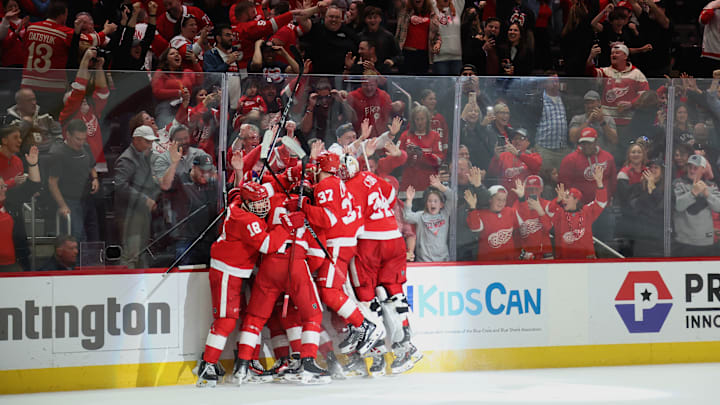At the conclusion of the 2023-24 season, the Detroit Red Wings finished with a 41-32-9 record, accumulating 91 points and securing 5th place in the Atlantic Division. Despite their best efforts, they fell short of a Wild Card spot, which the Washington Capitals claimed. This marked their eighth consecutive season, missing the playoffs, leaving fans disheartened and prompting the organization to reassess and strategize for the upcoming season.
Season Recap and Organizational Response
Following the season, in evaluating their performance, the Red Wings’ management acknowledged both the strides made and areas the team collectively needed to improve in. The team’s offensive output showed promise, with several young players demonstrating their potential, as well as veterans stepping up critically.
However, inconsistencies in defense and goaltending were evident, contributing to their failure to secure a playoff berth. Addressing issues became a priority as the front office began to explore potential trades, free-agent signings, and draft picks to bolster their roster.
The 2024 offseason brought a flurry of activity for the Red Wings. Several key acquisitions were made to shore up the blueline and improve goaltending stability. The team also focused on developing their promising prospects, aiming to integrate them more effectively into the NHL lineup. Coaches and staff worked on refining strategies and building upon the chemistry among their players to ensure a more cohesive unit. These changes will be crucial steps toward reversing the team’s fortunes and, hopefully, ending their eight-year playoff drought.
As the 2024-25 season approaches, it wouldn’t be a stretch to say that the Red Wings fan base approaches the new season with cautious optimism. The improvements and strategic changes provided a glimmer of hope, though many were tempered by the skepticism borne from years of disappointment.
The organization remained committed to a long-term vision of rebuilding and competitiveness, emphasizing the importance of patience and perseverance. With renewed determination and a refined approach, the Red Wings aimed to break their playoff slump and return to contention in the near future.
If the Detroit Red Wings hope to secure a playoff spot this season, embracing a long-term vision of rebuilding and competitiveness will be crucial. The organization’s commitment to patience and perseverance, renewed determination, and a refined approach will serve as a blueprint for breaking their playoff slump and returning to contention.
Additionally, focusing on five key strategies—strengthening team cohesion, enhancing player development, optimizing game strategies, improving physical conditioning, and bolstering defensive play—will be essential for making significant strides and achieving success in the upcoming season.
